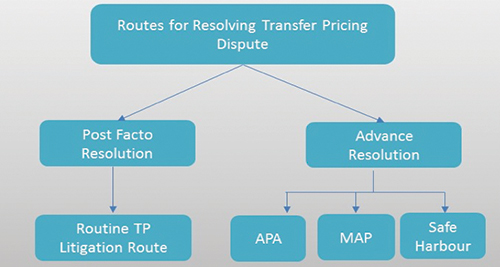
One theory asserts that the DR and CR come from the Latin present active infinitives of debitum and creditum, which are debere and credere, respectively. Another theory is that DR stands for “debit record” and CR stands for “credit record.” Finally, some believe the DR notation is short for “debtor” and CR is short for “creditor.” The term debit comes from the word debitum, meaning “what is due,” and credit comes from creditum, defined as “something entrusted to another or a loan.”
This number uniquely identifies each transaction in a batch entered into USAS. Nowmaster helps RTOs and qualified training and assessors to develop teaching, learning and assessing resources that align with ASQA’s requirements. BK (System generated)
Displays the bank number for nonexpenditure transactions. PMT TYPE (System generated)
Displays the cash receipt payment type.
Redfin Estimate for 7526 Debit Dr
However, the difference between the two figures in this case would be a debit balance of $2,000, which is an abnormal balance. This situation could possibly occur with an overpayment to a supplier or an error in recording. The 84 screen pulls information from either the active or inactive accounting event (AE) table, depending on where the transaction is stored. Certain fields that are stored on the active AE table are not stored on the inactive AE table. For example, vendor/payee city, state and ZIP code are not stored on the inactive AE table. Therefore, these fields will be blank if the transaction is recalled from the inactive AE table.
Thus, a debit (dr.) signifies that an asset is due from another party, while a credit (cr.) signifies an obligation to another party. IC (System generated)
Displays the interest control indicator and reason code. PMT DIST DATE (System generated)
Displays the payment distribution date.
- This number uniquely identifies each transaction in a batch entered into USAS.
- AGENCY (System generated)
Displays the financial agency number. - BK (System generated)
Displays the bank number for nonexpenditure transactions. - The fourth pair is reserved for the automatic liquidations of pre-encumbrances and encumbrances.
- When you increase assets, the change in the account is a debit, because something must be due for that increase (the price of the asset).
Let’s consider the following example to better understand abnormal balances. Debits and credits are used in a double entry recordkeeping system. When you increase assets, the change in the account is a debit, because something must be due for that increase (the price of the asset).
What is the abbreviation for debit and credit?
A message at the bottom of the screen will indicate which table the transaction was stored on. When Client A pays the invoice to Company XYZ, the accountant records the amount as a credit in the accounts receivables section and a debit in the cash section. GL (System generated)
Displays the comptroller general ledger (GL) accounts by debit (DR) and credit (CR) impact based on the transaction code used and the reversal indicator.
Arrests and Incidents reported Aug. 7, 2023 – The Cullman Tribune
Arrests and Incidents reported Aug. 7, 2023.
Posted: Mon, 07 Aug 2023 18:36:50 GMT [source]
LAST PROC – TIME (System generated)
Displays the last process time at the time of posting. LAST PROC – DT (System generated)
Displays the last process date up to the time of posting. NO (Required for recall)
Enter the three-digit batch number.
Details for 7608 DEBIT DR
We can illustrate each account type and its corresponding debit and credit effects in the form of an expanded accounting equation. The terms debit and credit signify actual accounting functions, both of which cause increases and decreases in accounts, depending on the type of account. That’s debit dr why simply using “increase” and “decrease” to signify changes to accounts wouldn’t work. Let’s say there were a credit of $4,000 and a debit of $6,000 in the Accounts Payable account. Since Accounts Payable increases on the credit side, one would expect a normal balance on the credit side.
Industry Professor Association (INDPA) is an organisation for people who wish to share their extensive industry experience directly with global learners for the mutual benefit of all. Adam Hayes, Ph.D., CFA, is a financial writer with 15+ years Wall Street experience as a derivatives trader. Besides his extensive derivative trading expertise, Adam is an expert in economics and behavioral finance. Adam received his master’s in economics from The New School for Social Research and his Ph.D. from the University of Wisconsin-Madison in sociology. He is a CFA charterholder as well as holding FINRA Series 7, 55 & 63 licenses.
Work skills training
You will often see the terms debit and credit represented in shorthand, written as DR or dr and CR or cr, respectively. Depending on the account type, the sides that increase and decrease may vary. The Accounting Event Record Inquiry (84) screen displays transaction level information by transaction ID (batch agency, batch date, batch type, batch number and transaction sequence number). This screen displays up to eight comptroller general ledger accounts as determined by the transaction code found on the record. The 84 screen includes both entered and inferred data elements, as well as payment information (if applicable) for transactions that have posted to the USAS financial tables. The primary purpose of this screen is to view the details of transactions processed in USAS.
- A message at the bottom of the screen will indicate which table the transaction was stored on.
- TRANS CODE (System generated)
Displays the transaction code. - We can illustrate each account type and its corresponding debit and credit effects in the form of an expanded accounting equation.
- Debits and credits are used in a double entry recordkeeping system.
- That’s why simply using “increase” and “decrease” to signify changes to accounts wouldn’t work.
The normal balance is the expected balance each account type maintains, which is the side that increases. As assets and expenses increase on the debit side, their normal balance is a debit. Dividends paid to shareholders also have a normal balance that is a debit entry. Since liabilities, equity (such as common stock), and revenues increase with a credit, their “normal” balance is a credit.
Why is the bookkeeping abbreviation for debit ‘dr’?
He currently researches and teaches economic sociology and the social studies of finance at the Hebrew University in Jerusalem.
AGY GL (System generated)
Displays the agency general ledger account. AGENCY (Required for recall)
Enter the three-digit batch agency number assigned to the agency. Each account can be represented visually by splitting the account into left and right sides as shown. This graphic representation of a general ledger account is known as a T-account. A T-account is called a “T-account” because it looks like a “T,” as you can see with the T-account shown here. When it comes to the DR and CR abbreviations for debit and credit, a few theories exist.

Table 1.1 shows the normal balances and increases for each account type. A debit records financial information on the left side of each account. A credit records financial information on the right side of an account. One side of each account will increase and the other side will decrease. The ending account balance is found by calculating the difference between debits and credits for each account.
Frequently asked questions for 7526 Debit Dr
Up to four pairs of GL accounts can be displayed for a single transaction. The fourth pair is reserved for the automatic liquidations of pre-encumbrances and encumbrances. There are a few theories on the origin of the abbreviations used for debit (DR) and credit (CR) in accounting. To explain these theories, here is a brief introduction to the use of debits and credits, and how the technique of double-entry accounting, came to be. When an account produces a balance that is contrary to what the expected normal balance of that account is, this account has an abnormal balance.

COMP/AGY OBJ (System generated)
Displays the comptroller object and agency object. TRANS CODE (System generated)
Displays the transaction code. AGENCY (System generated)
Displays the financial agency number. CUR DOC/SFX (System generated)
Displays the current document number and suffix. TYPE (Required for recall)
Enter the one-character batch type.
